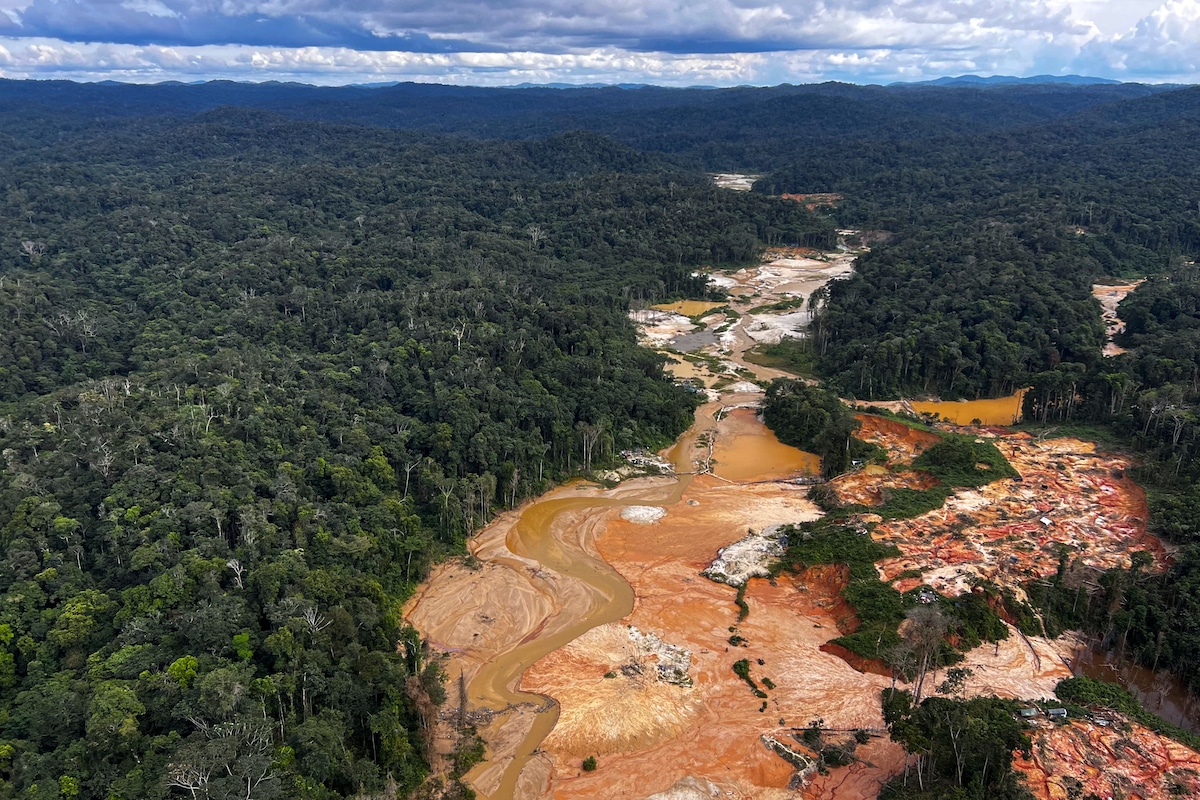Deforestation in Brazil’s Amazon Sees Its Worst February on Record as Lula Struggles With Bolsonaro’s Legacy

 Why you can trust us
Why you can trust us
Founded in 2005 as an Ohio-based environmental newspaper, EcoWatch is a digital platform dedicated to publishing quality, science-based content on environmental issues, causes, and solutions.
Despite the electoral victory of President Luiz Inacio Lula da Silva — who has promised to end deforestation in the Brazilian Amazon by 2030 — the forest just experienced its worst February on record.
Brazil’s INPE space research institute’s DETER monitoring system found that 80.6 square miles of forest had been cleared as of Feb. 17, as AFP reported, an area equal to around 30,000 football fields. However, WWF Brazil expert Daniel Silva said the record deforestation might not be all it seemed.
“The increase in the deforested area in the first days of February must be interpreted with caution,” he told Brazilian website G1. “We had an increase in clouds in January and DETER may be detecting deforestation in February that occurred last month.”
Lula’s 2022 victory over right-wing incumbent Jair Bolsonaro was celebrated as a reprieve for the Amazon rainforest and for the Indigenous people who call it home. Bolsonaro had supported exploitative industries at the expense of protections for the environment and Indigenous rights, and more than 13,000 square miles of forest were lost during his tenure. Lula, on the other hand, has promised to protect 193,000 square miles and start a rainforest-protection coalition with Indonesia and the Democratic Republic of Congo. He also has a proven track record: During his first run as president from 2004 to 2011, he managed to curb deforestation by nearly 75 percent by working with Environmental Minister Marina Silva, who now holds the job again, as NPR reported.
In January, the first month of his second presidency, it looked like things were off to a good start, with INPE reporting deforestation numbers down 61 percent from January 2022, which was the worst in eight years, as Reuters reported at the time.
However, even then, Silva urged caution.
“It is positive to see such a relevant drop in January,” he said. “However, it is still too early to talk about a trend reversal, as part of this drop may be related to greater cloud cover.”
February’s numbers, meanwhile, are around five percent higher than the 199 square kilometers (approximately 77 square miles) lost in February 2022 under Bolsonaro, according to Brazilian Report.
Lula faces many challenges in reversing Bolsonaro’s policies because he has to bolster environmental agencies following funding and staffing reductions, according to Reuters. He also inherits a crisis in the Brazilian Amazon’s largest Indigenous reserve as illegal gold miners invade Yanomami territory in the state of Roraima. The number of miners breaching the reserve — and bringing with them violence, environmental destruction and disease — went up by at least 25,000 during Bolsonaro’s tenure, as The Guardian reported.
Lula’s government has condemned both the miners’ actions and the policies of Bolsonaro that enabled them, and launched its first operation to repel them from the area in early February.
“More than a humanitarian crisis, what I saw in Roraima was a genocide,” Lula tweeted after visiting the area in January, as The Guardian reported at the time. “A premeditated crime against the Yanomami, committed by a government impervious to the suffering of the Brazilian people.”
Subscribe to get exclusive updates in our daily newsletter!
By signing up, you agree to the Terms of Use and Privacy Policy & to receive electronic communications from EcoWatch Media Group, which may include marketing promotions, advertisements and sponsored content.

 233k
233k  41k
41k  Subscribe
Subscribe 




